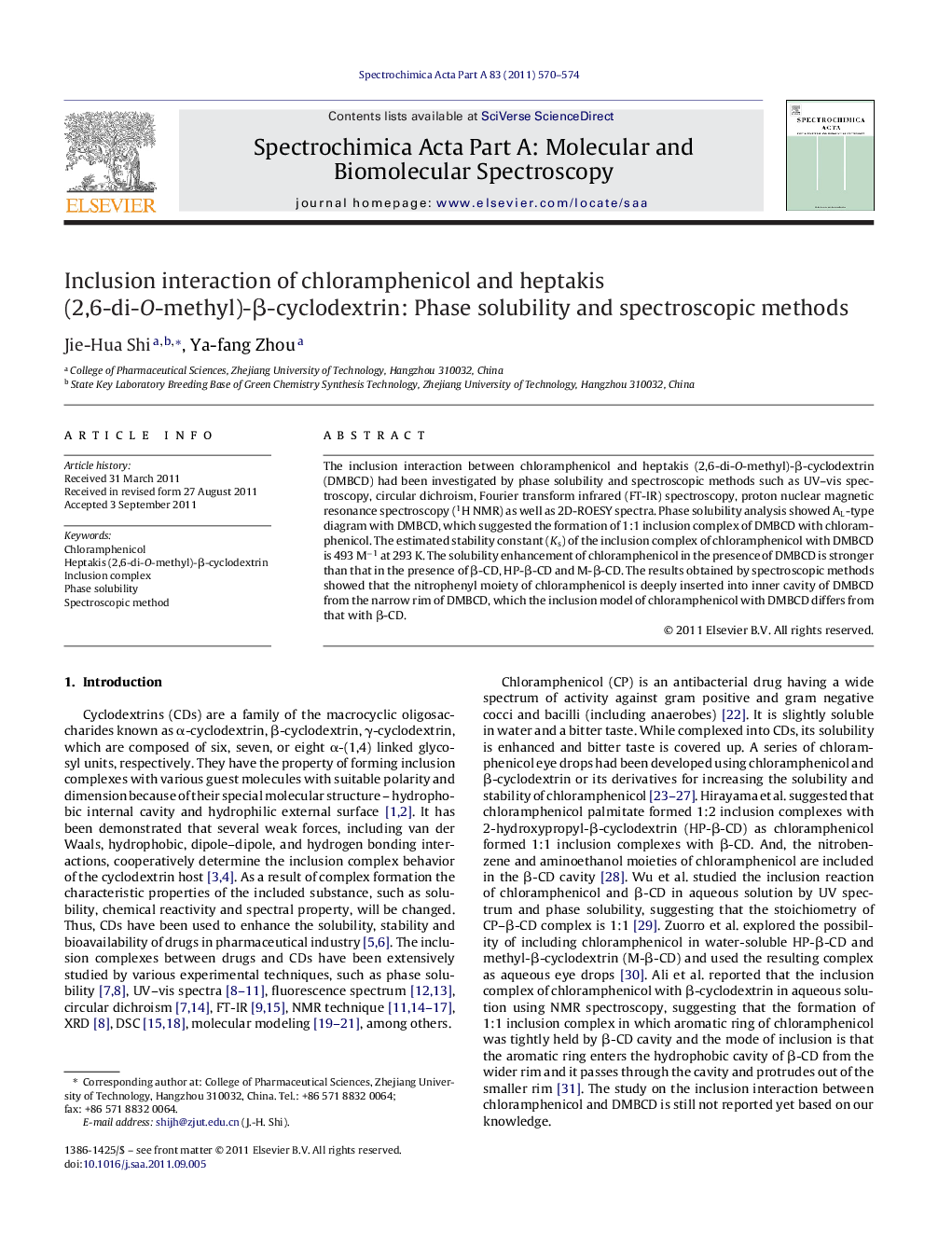| Article ID | Journal | Published Year | Pages | File Type |
|---|---|---|---|---|
| 1235221 | Spectrochimica Acta Part A: Molecular and Biomolecular Spectroscopy | 2011 | 5 Pages |
The inclusion interaction between chloramphenicol and heptakis (2,6-di-O-methyl)-β-cyclodextrin (DMBCD) had been investigated by phase solubility and spectroscopic methods such as UV–vis spectroscopy, circular dichroism, Fourier transform infrared (FT-IR) spectroscopy, proton nuclear magnetic resonance spectroscopy (1H NMR) as well as 2D-ROESY spectra. Phase solubility analysis showed AL-type diagram with DMBCD, which suggested the formation of 1:1 inclusion complex of DMBCD with chloramphenicol. The estimated stability constant (Ks) of the inclusion complex of chloramphenicol with DMBCD is 493 M−1 at 293 K. The solubility enhancement of chloramphenicol in the presence of DMBCD is stronger than that in the presence of β-CD, HP-β-CD and M-β-CD. The results obtained by spectroscopic methods showed that the nitrophenyl moiety of chloramphenicol is deeply inserted into inner cavity of DMBCD from the narrow rim of DMBCD, which the inclusion model of chloramphenicol with DMBCD differs from that with β-CD.
Graphical abstractThere is interaction between chloramphenicol and DMBCD leading to producing 1:1 complex and increasing solubility of chloramphenicol in water. The results obtained by spectroscopic methods showed that the nitrophenyl moiety of chloramphenicol is deeply inserted into inner cavity of DMBCD from the narrow rim of DMBCD, which the inclusion model of chloramphenicol with DMBCD differs from that with β-CD.Figure optionsDownload full-size imageDownload as PowerPoint slideHighlights► 1:1 complex of chloramphenicol with DMBCD was formed by inclusion interaction. ► DMBCD had stronger ability of solubility enhancement for chloramphenicol. ► The nitrophenyl moiety of chloramphenicol is deeply inserted into cavity of DMBCD.
